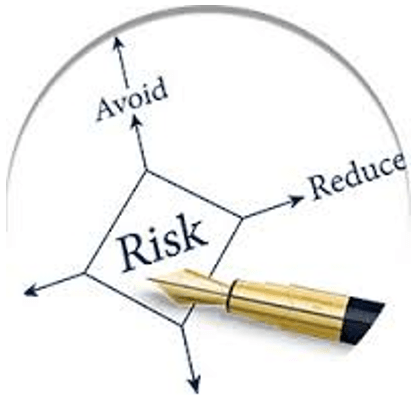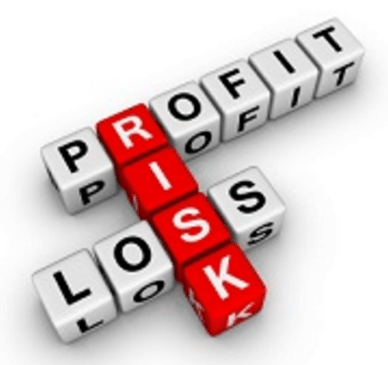Introduction: Your Different Investment Options and the Benefits of Low-Risk Investments and High-Risk Investments
For both veteran and amateur investors, learning how to understand and gauge risk in your investment options is one of the most important skills to learn and develop.
Investment risk is present no matter what you are investing in, though there are obviously differences between low-risk investment options and high-risk high return investments.
Despite the importance of risks in investments, there is no universally agreed upon formula to calculate investment risk management.



Image source: Pixabay
Rather, low-risk investments and high-risk investments depend on a number of factors that can sometimes be fairly ambiguous. So, how do you know how to spot risky investments you see them and develop a sound investment risk management strategy?
In this brief article, AdvisoryHQ will look at the different investment options available to investors, from low-risk investments to high-risk investments.
We begin by looking at what most investors agree defines risks in investments. Next, we will look at different strategies to offset investment risk. For investors looking for a quick return on investment, we will also consider some of the benefits of high-risk, high-return investments.
We will also offer advice on some of the best low-risk investment options while explaining why every investor should learn the principles of investment risk management in order to avoid needlessly risky investments.
See Also: What are Index Funds? Advantages and Disadvantages
What Defines Risks in Investments?
Despite the fact that investment risk is perhaps the most important factor when considering your investment options, understanding what defines low-risk investments and high-risk investments is not as clear as it may initially appear.
While some investing firms may define investment risk in terms of the volatility of the market, that can be deceiving.
While a volatile market may not remain steady and therefore expose investors to a larger amount of potential outcomes, that doesn’t necessarily mean that those outcomes can be termed as risky investments.
A better way to think of risk in investments is the probability that a certain investment or asset will experience either permanent loss or perform under your expectations.
For example, if you expect your investment to return 5% over a certain number of years, the likelihood that it won’t meet that expectation can be used to determine whether you are investing in low-risk investments or high-risk investments.



Image Source: IFCM Capital
According to Investopedia.com, “If investors accept the notion that investment risk is defined by a loss of capital and/or underperformance relative to expectations, it makes defining low risk and high-risk investments substantially easier.”
With this definition of risk in investment options, it is much easier for even a novice investor to make choices regarding both high-risk investments and low-risk investments.
High-risk, high-return investments come with a high percentage chance of loss of capital or underperformance, while low-risk investment options come with a relatively small chance of a devastating loss.
Don’t Miss: What are Investment Funds? These are Special Types of Financial Instru…
How Do You Offset Investment Risk?
While conservative investors who are most interested in avoiding any and all sort of risks in investments, putting all your money in seemingly safe government bonds might not necessarily be the best option.



Image Source: Fin Tips Financial Services
When it comes to risk in investment options, it is important to consider not only the probability of some sort of loss, but also the potential magnitude of a loss if it were to occur.
While government bonds are often considered to be low-risk investment options because of the low probability of any sort of loss and a low volatility, if you were to invest all of your funds in government bonds, you would be in major trouble if the U.S. government suddenly went bankrupt and defaulted on those bonds.
While the probability of that happening is low, the magnitude of such an event if you had all your money tied up in that particular investment option would be devastating.
All-in-One Change Management Tools
Top Rated Toolkit for Change Managers.
Get Your Change Management Tool Today...
One of the best ways to limit risky investments, then, is through diversifying your investment portfolio. There are virtually unlimited investment options on the market from low-risk investments to high-risk investments.
By maintaining a diverse portfolio, you will be able to take advantage of the high-risk, high-return investments when they do well while also protecting part of your funds through low-risk investment options.
As your grandmother probably told you, it’s never wise to put all your eggs in one basket, even if that basket appears to be fairly sturdy.
Related: What are Fixed Annuities? A Fixed Annuity is Defined as a Set Amount of …
The Potential Benefits of High-Risk, High-Return Investments
The possibility of hitting it big on an investment is every investor’s dream. While there is no sure-fire way to read the market, a number of investor “gurus” are always trying to convince you that they have an inside scoop on how to find the best high-risk, high-return investments.
While many high-risk, high-return investments might yield great returns due to the luck of the draw, other high-risk investments by their nature offer the possibility of either great loss or great gain.
For example, investing in foreign emerging markets is a textbook example of high-risk investments. These investment options allow you to invest in a country or geographical region that is currently undergoing dynamic economic growth spurred on by certain political events or ties to parts of the global economy.



Getting into these investment options at the right time can lead to massive gains in a short period of time. However, as is the case with most high-risk investments, there is also the possibility for near-total loss.
The political and economic stability in foreign emerging markets is usually substantially less than in industrialized, developed nations. The chance of some sort of political, economic, or social chaos occurring could very well place your investment at risk.
Furthermore, it is never easy to gauge just how long the economic booms in foreign emerging markets might last, and that can also lead to great investment risk.
Popular Article: What is a Brokerage Account?
A Primer on Low-Risk Investment Options
If these types of risky investments don’t appeal to you, finding low-risk investments might be a priority for your investing style. There are a number of low risk investment options on the market, and many of them also offer decent returns as well.
One of the problems with low-risk investments is that in recent years, the low interest rates have left you earning hardly a penny on guaranteed investment options like CDs. While no one likes losing money, investing in some asset that only makes you pennies on the dollar won’t get you ready for retirement too quickly.
According to Moneycrashers.com, “there are several investment options paying higher rates of interest than CDs and treasury securities with a very reasonable amount of risk.
Those who are willing to explore some of these options can significantly increase their investment income without having to lie awake at night worrying whether their money will still be there in the morning.”









For example, one of the most common types of low-risk investments is preferred stock. These investment options trade like stock but also have characteristics that more closely resemble a bond. There is very little liquidity risk with these types of investment options since you can sell at any time without receiving any sort of penalty.
The default risk on preferred stock is measured in the same way as with bonds, so you can have a fairly good idea of how safe your investment is.
Despite these added securities, these low-risk investments usually pay somewhere between 2 and 3% higher than secured CDs, making them a decent investment option for people who opt for a conservative investment risk management strategy.
Read More: Top Credit Card Companies | Ranking & Reviews | Best Card Providers
The Importance of Learning Investment Risk Management to Avoid Needless Risky Investments
It is important to understand that all investment options carry some sort of investment risk. Even if you bury your money in a wall in your home (which isn’t much of an investment after all), your home could suddenly burn down.
While some investment options such as CDs might guarantee your principal, they also carry a type of investment risk that is tied to inflation, which can wipe out your savings just as easily as high-risk, high-return investments.
According to the Financial Industry Regulatory Authority FINRA: “Based on historical data, holding a broad portfolio of stocks over an extended period of time (for instance a large-cap portfolio like the S&P 500 over a 20-year period) significantly reduces your chances of losing your principal.”
As we mentioned above, one of the best strategies for successful investment risk management is through diversifying your investment portfolio with a variety of high-risk investments and low-risk investments.
Other aspects of successful investment risk management include different types of asset allocations, including stocks, bonds, mutual funds, CDs, real estate, and cash. Furthermore, investing for the long term is another way to limit the number of risks in investments by spreading your returns out over longer time periods.
Free Wealth & Finance Software - Get Yours Now ►
Conclusion – Know Your Investment Options Before Deciding Between Low-Risk Investments and High-Risk Investments
Taking the time to search through your investment options is one of the most important things you can do before deciding where to put your money. There are virtually unlimited investment options, which will allow you the autonomy to decide how you want to invest your money.
Diversifying your investment portfolio with a wide variety of both high-risk investments and low-risk investments is almost always a way to reduce investment risk. Furthermore, putting your money in different types of assets will also help your investment risk management strategy.
Whichever investment options you eventually end up choosing, be they primarily high-risk investments or low-risk investments, taking the time to do in-depth research of market conditions will always be well worth your while.
AdvisoryHQ (AHQ) Disclaimer:
Reasonable efforts have been made by AdvisoryHQ to present accurate information, however all info is presented without warranty. Review AdvisoryHQ’s Terms for details. Also review each firm’s site for the most updated data, rates and info.
Note: Firms and products, including the one(s) reviewed above, may be AdvisoryHQ's affiliates. Click to view AdvisoryHQ's advertiser disclosures.





